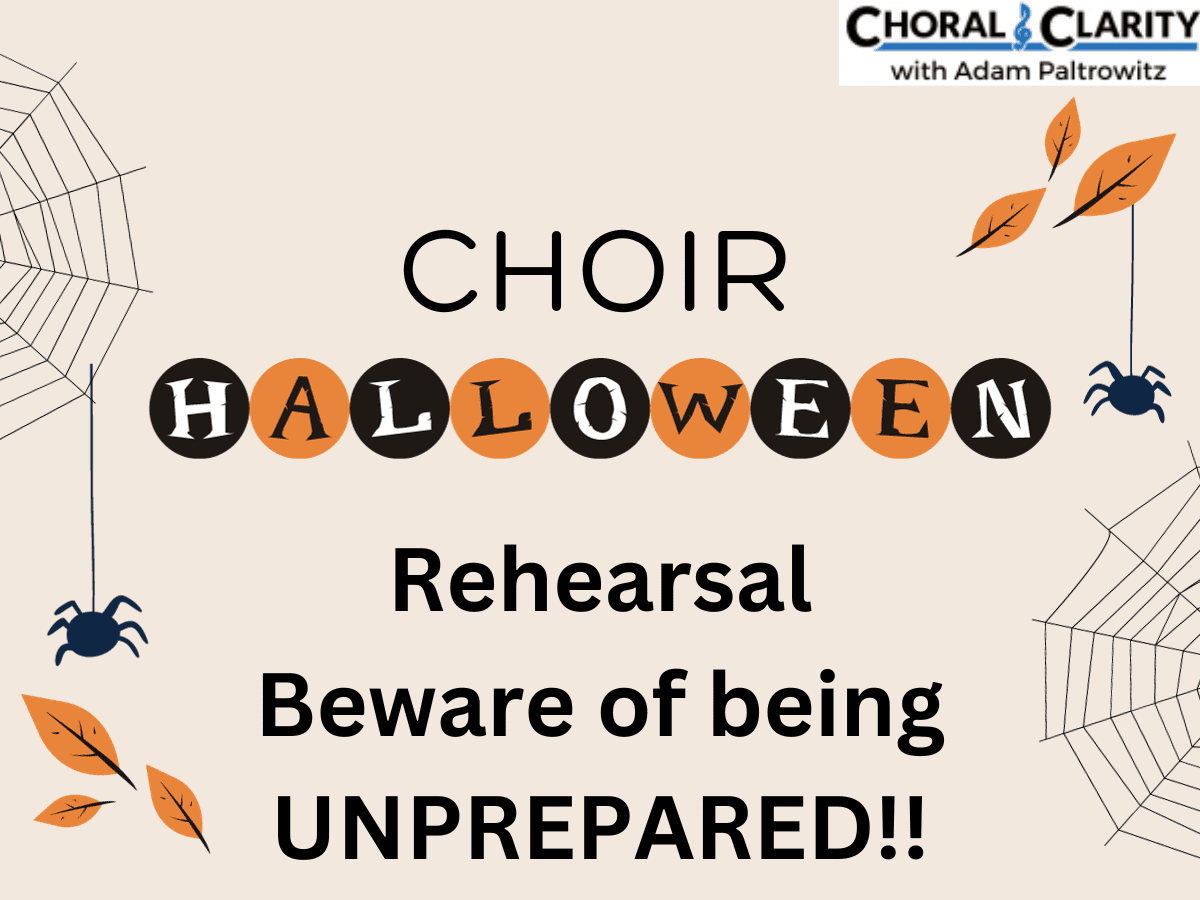If we were carrying a bucket of water that had a hole at the bottom, would we continue to add more and more water or would we first ensure we have properly patched the hole?
In a choral program, do we try to add more and more students or do we try to maintain the core of our current program first?
We shouldn’t think about recruiting new choir members until we have successfully figured out how to retain the students we currently have.
The overwhelming majority of our current students, 90% as a bare minimum, should be continuing in our program next year.
There are so many article with great suggestions on recruitment techniques. The traditional “go to a school sporting event” and hang with student athletes may work for some choral directors.
Try SIGHT READING FACTORY and save 10% using code: choralclarity
– the best classroom sight-singing tool on the market!!
While recruitment is a necessary part of a successful program, it is NOT the first step.
We must have a successful retention strategy before we focus our energy on recruitment. Recruitment should be predicated on retainment. We should be retaining at least 90% of our students at the absolute minimum. Of the first year students who enter our choral program, at least 80% should be continuing, but we should be aiming for closer to 100%.
Consider this thought: if every year we are successful in recruiting a large number of students but the majority of those students do not continue, what value did our efforts truly have toward building our program?
While some choral directors focus their attention on recruitment, they often miss the larger goal of retaining every current student first. As a result, they end up basically starting from scratch year after year, rather than continuing to build a self-generating program that produces consistent returns on its own, year after year.
Retention is more than a one-year continuation
Along with this thought process, I believe every student that signs up to be part of our program is one worth having for the entirety of their high school career. When we gain a customer, they now become our customer to lose. Should they drop our program for any reason, it is a loss to our program.
In most cases, losing a customer is avoidable.
We must focus our energy on creating a successful retention plan prior to employing a vigorous recruitment strategy. I’ve provided six reasons why this is necessary and how not making retention our first priority will heavily impact the core of our program year after year.
Here are 6 reasons why we must prioritize retainment before recruitment:
1. Students who are retained in our program will set the tone for all new members of what is expected
When the majority of our students continue, our core will remain strong from year to year. Additional students (recruited students) will join a class filled with repeat customers who they will follow and learn from. Continuing students will lead the way in demonstrating to new recruits proper rehearsal etiquette, focus, sight-reading skills, confidence, tone, balance, etc.
Without predominantly focusing in daily rehearsals on continuing members, new members will take the reign in dictating appropriate (or inappropriate) behavior and expectations, which can make for one tough year.
2. A recruited student has no investment in our program: not yet, anyway
How can a brand new student possess any ownership when they haven’t yet experienced our Winter Concert, Spring Concert, or any of our traditions? Recruited students are more likely to be active observers than they are to be leaders and role models. It isn’t until their second year that most students take ownership: sing out, become leaders, commit fully, etc. Without a large core of repeat customers, there cannot be any real tradition within the current choir.
Flat.io – save 15% on the best online music notation program
3. Newly recruited student will be looking to be won-over
When a class is dominated by recruits, they will be looking to be catered to. Recruits will not automatically believe sight-reading is important, singing in their head voice is necessary, or that focus is key to a successful and enjoyable rehearsal. It is likely we will spend more time convincing and catering than we will teaching and inspiring.
The Ultimate Sight-Singing Developmental Rubric
– teach your weaker sight-singers the secret skills they are missing!
4. A newly recruited student will be expecting “cool” music
When the core of the program has been retained year after year, it’s those student’s who set the tone for what is “cool”. Our invested students will show the new members what their program is all about.
“Peace” (SATB – a-cappella), Sara Teasdale poem – instant download
5. Convincing students to become repeat customers is really difficult when they were just convinced to join
A business that has no plan for retaining customers is a business that will only have one-time customers. We must first focus on the customers we currently have. When our choir culture dictates the expectation of continuing year after year, new recruits will recognize this expectation on their own. Without this inherent culture, it’s an uphill battle year after year.
6. Our best recruits come by referral from our invested students
A continuing student who brings in a new student the following year is the most powerful example of success. This means we have students who are imvested in the success of our program and want their friends to appreciate our cultivated choir culture.










Leave A Comment